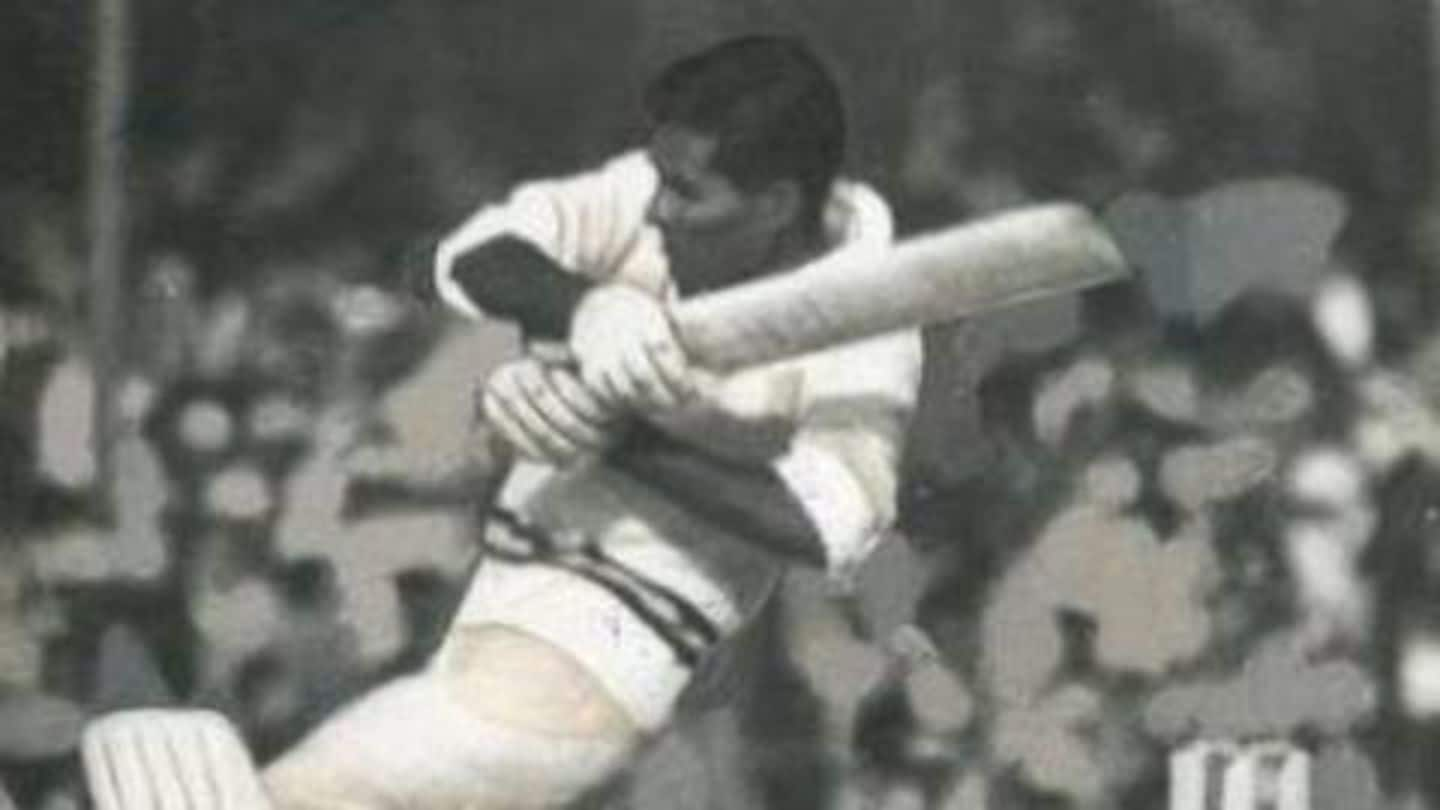Girja Shankar Dixit
Buddhi Kunderan, born on October 2, 1939, was a cricketing pioneer who revolutionized the role of the wicket-keeper, blending aggressive batting with sharp glovesmanship. He was one of the first to bring flair to the wicket-keeper position, blending boldness and brilliance, much like his West Indian counterparts. Kunderan’s unique approach set him apart from the traditional, more reserved wicket-keepers of his time, notably the self-effacing Naren Tamhane, whom he succeeded.
Kunderan’s cricketing journey began in Bombay (now Mumbai), where he played for the city’s top teams and shone brightly in Inter-University competitions. His performances quickly caught the attention of the Indian selectors, and in 1959-60, at just 20 years old, he was selected for the Indian Test team – even before he had played a single Ranji Trophy match. This remarkable achievement spoke volumes about his potential as both a batsman and a wicketkeeper.
Buddhi Kunderan’s batting was characterized by courage, technical excellence, and sharp reflexes. As a former boxer, his nimble feet and quick reactions helped him excel behind the stumps. His unique style, which made him a standout player, was built on instincts more than technique. He was always eager to pounce on the ball, whether standing up to the stumps or crouching behind them, making quick dismissals look effortless.
His debut season, 1959-60, was particularly memorable. A month after his Test debut, he scored a stunning 205 runs against Jammu & Kashmir in the Ranji Trophy, showcasing his all-round talent. He followed that up with 20 dismissals behind the stumps, proving his worth in both batting and wicketkeeping.
Kunderan’s journey with the national team wasn’t without challenges. Despite his promising start, he was dropped from the team after a few Tests, as selectors focused more on his flaws than his potential. However, his persistence paid off, and he was recalled after a standout performance for the Board President’s XI against Pakistan. He was included in the next two Tests, primarily as a wicketkeeper but also as a tail-ender batsman.
In 1962, he was part of India’s tour of the West Indies, sharing wicketkeeping duties with Farookh Engineer. Kunderan impressed in the final two Tests, taking five dismissals and continuing to play as a tail-end batsman. Despite his promising contributions, his wicketkeeping was considered a work in progress.

The 1963-64 series against England was a breakthrough for Kunderan, showcasing his brilliance as both a batsman and a wicketkeeper. When the Engineer was injured before the first Test, Kunderan stepped in and delivered a scintillating 192 runs. Though he was denied a double century due to some batting constraints, Kunderan’s knock was hailed as one of the finest. His square drives and late-cut shots were a joy to watch, and his class shone through.
In the same series, Kunderan’s wicketkeeping and batting were exceptional. He scored 525 runs in total, a record for an Indian wicketkeeper, cementing his place as a top player. He also excelled in the field, proving himself an outstanding fielder – a trait not commonly associated with wicketkeepers of his era.
Kunderan’s career saw him play crucial innings in various series, including against the West Indies, where he scored a blistering 79 runs off just 92 balls. His aggressive batting style made him a significant asset for India, as he regularly entertained fans with his audacious strokeplay.
One of the more unusual moments in Kunderan’s career came in 1967 when, during a Test against England, he opened the bowling for India. A wicketkeeper-turned-bowler and opening batsman – this unusual feat was another testament to Kunderan’s versatility and willingness to embrace any challenge. Unfortunately, that would be his last Test match at just 28 years old.
Though his international career was relatively short, Kunderan continued to play in domestic cricket for teams like Railways and Mysore (now Karnataka), achieving success in competitions such as the Ranji Trophy, Irani Trophy, and Duleep Trophy. He scored over 2,260 runs in the Ranji Trophy, with his 205-run knock against Jammu & Kashmir being a standout performance.
Unforgettable Moments in His Career
Buddhi Kunderan’s journey to the Indian team was far from glamorous. As a young cricketer about to make his Test debut against Australia, he had none of the comforts that modern-day players enjoy. Living in a small room in a Chawl in Bazaar Gate, Mumbai, Kunderan didn’t have the luxury of a hotel room to rest before the match. Instead, he spent the night sleeping under the stars at a gymnasium near the Bombay Gymkhana, with mosquitoes and the streetlights as his only companions. Despite these challenges, Kunderan played his heart out, keeping wickets for 148 overs in the match without a single complaint.
At that time, Kunderan didn’t even own a full set of cricket gear. He borrowed gloves from his predecessor Naren Tamhane, while his local club, Fort Vijay, lent him a bat and leg guards. Remarkably, he wore his old school cap instead of the official Indian cap. Yet, none of these challenges deterred him from making a memorable debut. His story is a testament to resilience and dedication, inspiring generations of cricketers to come.
Even after 48 years, Kunderan’s record of 525 runs in a series and his 192-run knock remain unbeaten by any Indian wicketkeeper, further solidifying his place in Indian cricket history as a pioneer and trailblazer in the sport.
Buddhi Kunderan’s career, though short-lived on the international stage, had a profound impact on Indian cricket. His innovative approach to wicket-keeping and aggressive batting reshaped the role of the wicketkeeper in Indian cricket, laying the foundation for future players. From his humble beginnings to his unforgettable performances in the Test arena, Kunderan’s legacy is a testament to his skill, determination, and passion for the game. His resilience, both on and off the field, continues to inspire cricketers, reminding us that greatness often comes from overcoming the most challenging circumstances.






